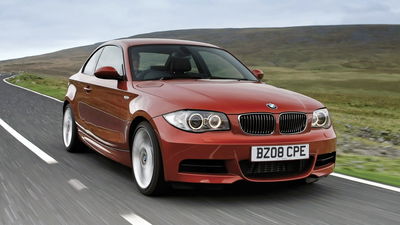Mercedes-AMG's New 2.0 Inline-Four Develops 415bhp, Revs To 7200rpm

While Mercedes-AMG isn’t quite ready to reveal the all-new A45 mega hatch, we have been given a detailed look at the engine. It’s called the M139, and we very much like the sound of it.
The output isn’t exactly a surprise, with the AMG A45’s specs accidentally revealed by a German insurance company a few months ago. You’re looking at 382bhp for the entry-level engine, and a heady 415bhp for the ‘S’ version. We weren’t expecting peak power to arrive so high in the rev range, though - it comes in at 6500rpm in the base engine, and 6750rpm in the S.

Peak torque comes in pretty late too, with the ‘basic’ engine’s 354lb ft developed between 4750-5000rpm, and the 369lb ft in the S made between 5000-5250rpm. The reason? It’s so this heavily-turbocharged engine doesn’t feel like it’s heavily turbocharged. “With this configuration, the AMG engineers have achieved a power delivery similar to that of a naturally aspirated engine for an even more emotive driving experience,” Mercedes says.
Further helping that N/A feel is the new twin-scroll turbocharger, which has - like the turbos in the AMG GT63 S 4-Door - roller bearings. These reduce friction, meaning the turbo doesn’t take as long to spin up to its 169,000rpm max speed. The setup also includes an electronic wastegate

While we’re on the subject of friction, the M139 also gets the same ‘nanoslide technology’ as the old A45’s engine, which was first used on the mighty M156 6.2-litre V8. This is a special coating for the cylinder liners, giving a “mirror-like surface” for the piston to pass through more smoothly.
The complete engine is flipped 180 degrees relative to the M260 used in the ‘35 family of AMGs, placing the turbo and exhaust manifold behind the block, and the intake in front. The reason? It gives an “aerodynamically advantageous front section design,” and shorter distances for the air-ducting to bridge “both on the intake and exhaust side.”
The M139 features variable valve control, and two fuel injectors per cylinder for two-stage injection. The first stage involves piezo injectors squirting fuel at pressures up to 200bar directly into the combustion stage, with the second stage featuring solenoid valves supplying fuel into the intake manifold to improve delivery when you start to get demanding with the throttle pedal.

To keep the engine cool, there’s an extra radiator in a wheel arch, working together with a whopping great one in the traditional location in front of the engine. The supply to both rads plus the intercooler is helped via an electric pump.
The M139 is made from some decent bits and pieces, too. The crankcase is all-aluminium made using a water-cooled ‘chill-cast’ for better density (and therefore strength), the pistons are forged aluminium, and the crankshaft is forged steel.
All of the above tips the scales at 160kg. It’s the most powerful inline-four engine in series production, and it might just make the A45 the king of hot hatches when it arrives later this year.















Comments
Can’t wait to hear it, hopefully it doesn’t sound like rubbish.
It will
It will do big transmission farts so people will be happy with that …
It’s a 2.0L inline 4. Unless it’s got a hood exit it’s probably gonna sound like a beehive
It’ll still look ugly probably, looking at Mercedes’ design lately
Everything Mercedes makes looks disgusting
I don’t think I could be ready for a world of 400HP hatchbacks, but that seems to be where we’re going
That tiny engine got some power
Long live the petrol engine
Time for that 2.5 TFSI to reach it’s full potential… Audi, time to make it 500+ in an RS3.
The 5-cylinders need to reclaim their rightful position on the throne of best engine
The whole purpose of the a45s is to defeat the rs3, there was an article earlier…
…placing the turbo and exhaust manifold behind the block, and the intake in front. The reason? It gives an “aerodynamically advantageous front section design,”
The real reason? so that it can’t be maintained by a sane person at a reasonable price once they become super cheap in a few years. you either throw it away or pay the officials 4x prices.
same reason bmw likes to place the distribution chain between the engine and the transmission
Heaps of cars have that configuration. If you’re patient it’s not bad. Not to mention the thermal distribution is much better but my point is it’s nothing new; and people who are afraid to get under their car probably shouldn’t be working on them anyway, lol.
I do prefer the easy older cars myself though.
No. Having intake at the rear of the engine and exhaust at the front is stupid as it makes both the exhaust and intake plumbing longer, more complex and less efficient. There’s reasoning behind why virtually every modern car with a transverse engine is set up with intake at the front and exhaust at the rear.
No one buys a car like this to maintain it themselves, and in any case how often do you have to actually do exhaust side/turbo maintenance? Never ideally, and hardly ever even in worst case scenarios.
I really really question the longevity of those 2.0L with such a big amount of power, especially on turbos. I would really question reliability of everything that push above 170hp.L